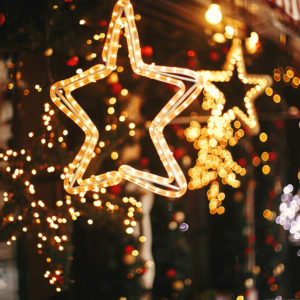This just in: the Grinch didn’t steal Christmas. Europe executed the heist.
It was surely filched by the cold-weather dwellers of Europe, and the theft was completed by the Victorians who loved all the paraphernalia of the festival — frost, snow, holly, mistletoe, festooned trees, Christmas puddings, wassail, mulled wine, mince pies (which had a combination of meat and fruit), sugarplums, fruitcake, cakes shaped like yule logs and, of course, pervasive red in everything, from poinsettias to front door bows.
All this was lovely fun in the time of Victoria Regina, and it gave us what is now the indisputable seasonal story. Where would we be without “A Christmas Carol” with Scrooge, Bob Cratchit, Tiny Tim and those fabulous characters that sprang from Charles Dickens’ rich imagination, when the spirit of Christmas gripped the great writer?
All this is wonderful and totally joyous. But what has it to do with the original Christmas in Bethlehem, where a woman gave birth to a baby in a barn stall? We can be sure that family didn’t need to be gathering fuel like Good King Wenceslas, who took pity on a poor fellow, “When the snow lay round about/Deep and crisp and even.”
Sorry, dear people, before you sip another eggnog, think about this: How did Christmas, celebrated around the world, get a snowy complexion? In the Southern Hemisphere, when it’s summer in the season of joy, nary a flake of snow falls. And why does the world fake snow when nature doesn’t provide?
My mother was a purest, a conservative about Christmas. We lived in a semitropical climate, where snow is unknown except by reputation. We were snow-deprived, sun-drenched.
When decorating for Christmas, Mum refused to use cotton wool, shaving cream, or anything else that is commonly used to suggest snow. She was all-in for Christmas but hung straw around the house to remind us of Christ’s manger and local ferns, which she believed grew along the River Jordan at the time of the Nativity. Mum had never been to the Holy Land, so I didn’t know why she thought that green stuff that grew in Central Africa also grew along a legendary river in the Middle East.
Truth is, I’ve examined the banks of the Jordan and I’ve never seen any of the ferns that Mum swore were authentic to Christ’s birth.
The wonderful thing about Christmas is that it’s universal. Everyone loves Christmas and complete with ersatz snow, tinsel, ribbons, artificial holly berries, Santa Claus (Mum wasn’t too keen on that interloper), it’s celebrated with gusto from its beloved place of origin in the contested West Bank (of the Jordan) to the farthest reaches of the world, where it isn’t expressly forbidden by local religious preference.
Another thing about a conservative Christmas as practiced by my mother: She didn’t let my brother and I start our Christmas revelry until Christmas Eve. Then it was as though a cannon had been fired and Christmas lasted 12 days, as in the carol.
The last of the 12 days was grand affair, which we loved as kids just a smidgen less than Christmas Day. The cause of this second celebration was a ceremony called a “snapdragon.” Dried fruit — mostly yellow and brown raisins — was soaked in brandy and ignited. As the flame wasn’t very hot, we children thrust our hands into the fire to grab the fruit. One year, I tried making this on television. I spilled the burning brandy and nearly burned down the studio, according to the fire marshal.
“No more,” he said. I’m sure his name was Ebenezer.
Drat, nobody stole Christmas. It’s where it has always been, safe in our hearts. It’s joy, laced with thrill, overflowing with love and tempered by a thought for the lonely, the sick, the hungry, the homeless, the incarcerated, and those wounded in all the ways people get wounded through the year.
A very merry Christmas to you.

